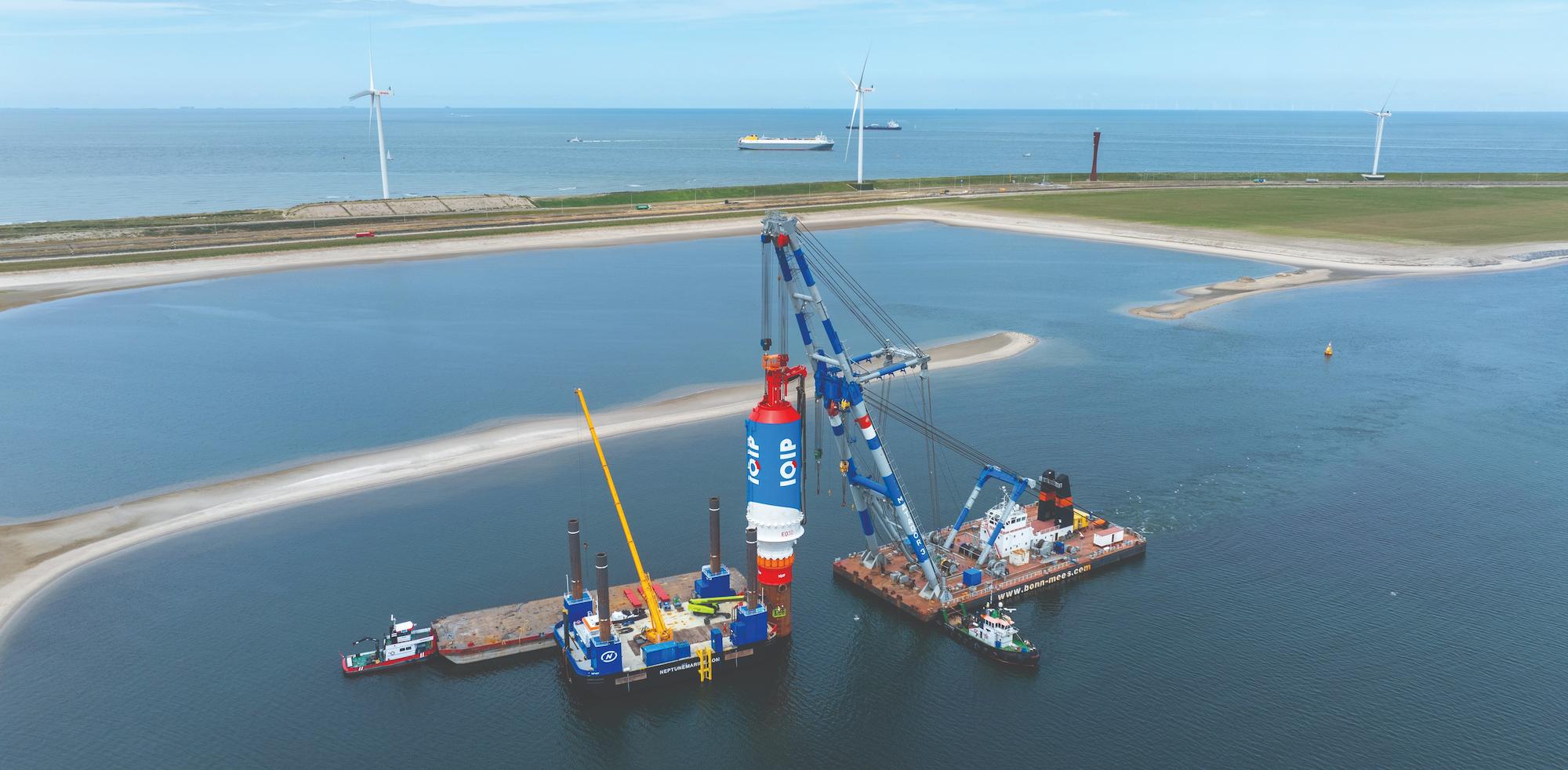Having experienced clients struggle with increasingly strict underwater noise regulations, IQIP has developed PULSE, an adaptable and energy efficient noise mitigation solution. Designed to be compatible with all IQIP hammers, the noise reduction add-on has already been tested and will be commercially released in the first half of 2022.
In recent years, many offshore windfarm developers have had no choice but to accept the additional cost, energy consumption and vessel requirements of secondary noise mitigation technologies. The problem has been particularly pressing in Europe and Taiwan, where noise reduction legislation and environmental concerns often necessitate technologies such as the Big Bubble Curtain (BBC). To offer an alternative solution, IQIP has been developing PULSE, an add-on technology that will significantly reduce the expense of noise mitigation with minimum effect to the efficiency of installation.
Comprising two plungers with a fluid layer in-between, the PULSE unit is directly placed between the hammer and sleeve. Because of this integration, the difference between conventional piling methods and PULSE is almost non-existing when it comes to the efficiency of installation. “A key feature is that the amount of fluid between the plungers can be adjusted when the hammer is on the pile, altering the system’s stiffness. This allows our operators to optimise the noise reduction for each pile, while maintaining drivability and installation speed,” explains Jonathan Stolk from IQIP’s R&D department. “Comparable systems are not adjustable, meaning that the stiffness must be decided upfront, and, because of the required safety margins on soil information, the decision is likely to be on the conservative side, strongly decreasing the noise reduction. With PULSE, we are not limited by this, but are always able to achieve the maximum performance on noise reduction with our existing hammer line-up.”
Used on its own with no further noise mitigating measures, calculations and tests prove that PULSE can reduce the SEL of conventional hammers with 6-9dB and the SPL with 9-12dB in the right circumstances. And the reductions will improve exponentially when the size of the hammer grows. For even higher reductions, the system can be combined with IQIP’s Integrated Monopile Installer (IMI), which directly mitigates noise by shielding the pile with a double-walled steel tube into which a bubble curtain can be fed. In most cases, the combination of those two systems would eliminate the need for a Bubble Curtain.








